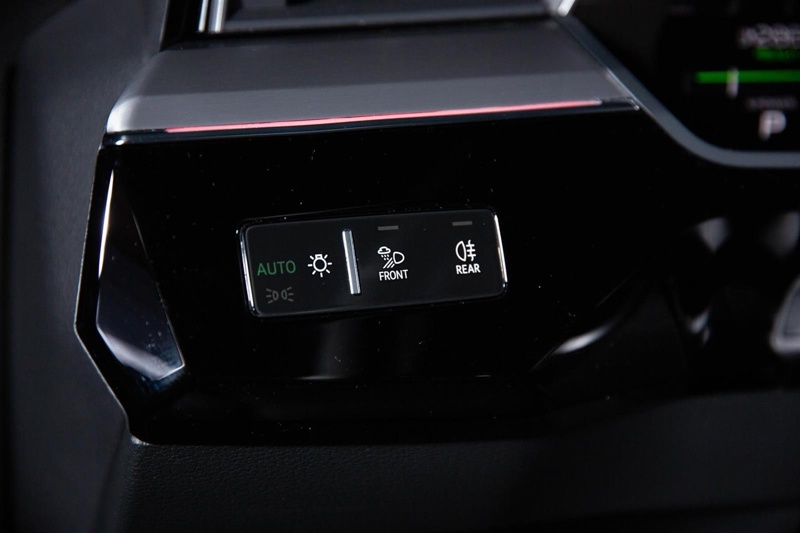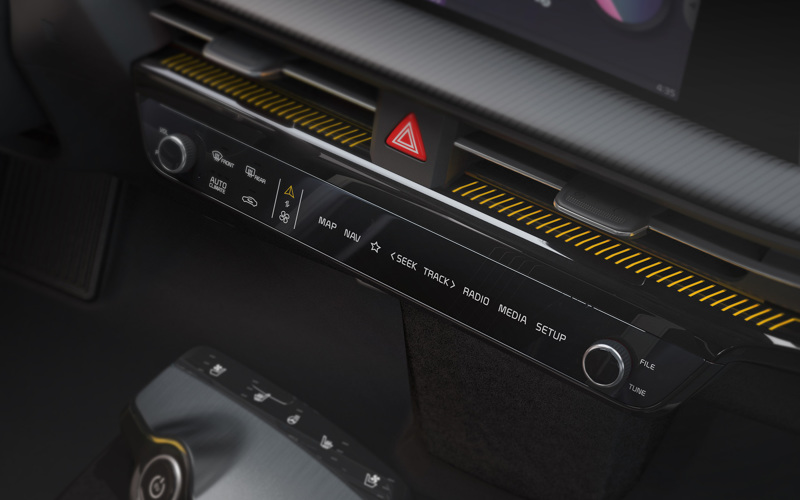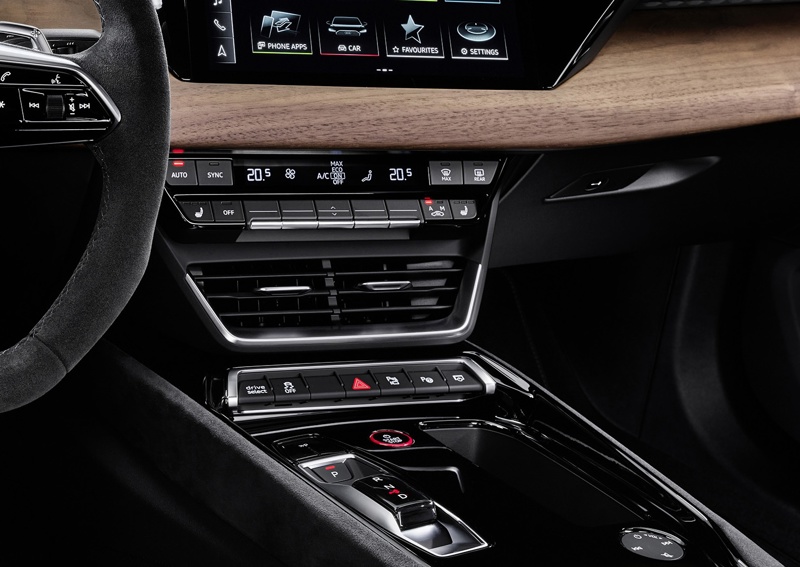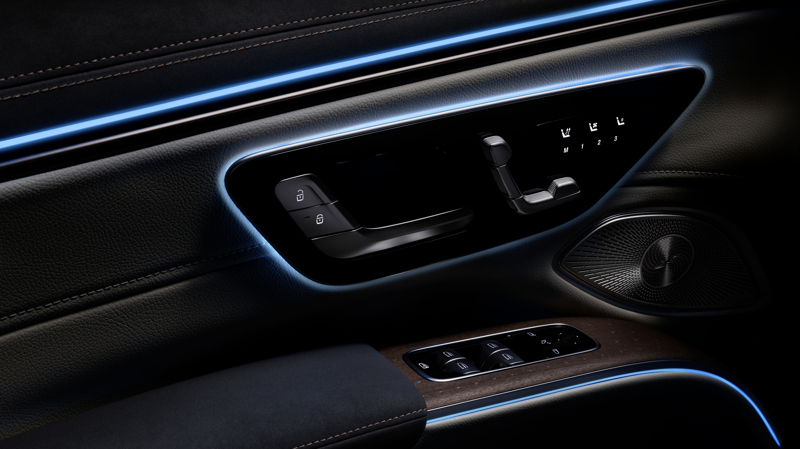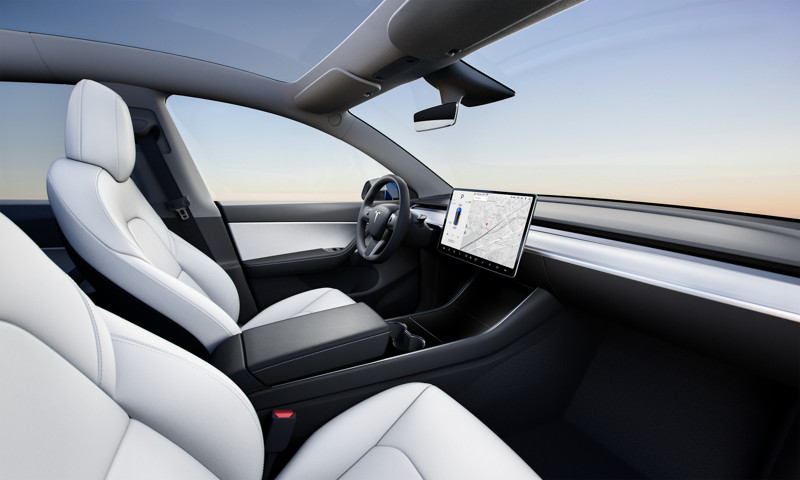Physical Buttons
With virtual buttons on screens taking over for physical buttons in more and more areas, there are still physical buttons in most EVs.
Manufacturers design these buttons to provide the driver and passengers convenient access to different features and settings of the vehicle.
Types of buttons
Instrument panel buttons
EV manufacturers typically locate these buttons on the instrument panel, which is in front of the driver and contains gauges, displays, and controls. These buttons may control functions such as lights, wipers, climate control, and other vehicle settings.
Audi Q8 e-tron light control buttons
Center console buttons
EV manufacturers locate these buttons on the center console, the central area between the driver and front passenger seats. These buttons may control functions such as audio and infotainment, air conditioning, seat heating/cooling, and more.
Kia EV6 center console buttons
Audi e-tron GT center console buttons
Door panel buttons
EV manufacturers locate these buttons on the door panels and control functions such as window switches, door lock/unlock, mirror adjustments, and sometimes even seat adjustments.
Mercedes EQS Suv door panels buttons
Steering wheel buttons
These buttons are integrated into the steering wheel and provide convenient access to various functions such as audio controls, phone controls, cruise control, voice commands, and vehicle information displays.
Functionality
Buttons in cars can vary significantly in functionality depending on the vehicle’s make, model, and trim level.
They can control a wide range of functions, including but not limited to audio and infotainment systems, climate control, lighting (interior and exterior), wipers and washers, seat adjustments, window and door lock controls, parking sensors, camera views, traction control, and more.
Many modern cars also have buttons that are linked to advanced driver assistance systems (ADAS) such as lane departure warning, blind spot monitoring, adaptive cruise control, and collision avoidance systems, allowing the driver to activate or deactivate these features as needed.
Design and Placement
The design and placement of buttons in cars are usually carefully considered by automakers to ensure easy accessibility and intuitive operation while driving.
Buttons are typically labeled or iconized for easy identification, and they may have tactile feedback, such as clicks or resistance, to provide a sense of confirmation when pressed.
Buttons may be made of durable materials such as plastic or metal, and they may have backlighting or illumination for visibility at night or in low-light conditions.
Physical buttons vs screens
Twenty years ago, every function had a button in a car, but more and more are moved to touch screens. Tesla is one of the most extreme manufacturers, with only a few physical buttons.
Tesla Model Y with only a few physical buttons
Buttons in cars provide a convenient way to control various functions without having to navigate through menus or settings on screens, allowing for quick and easy operation.
Well-designed buttons can contribute to safer driving practices by allowing drivers to keep their eyes on the road and hands on the wheel while operating different vehicle functions. Tests also show that drivers can perform tasks faster with physical buttons than with screens.
Most sold EVs globaly
Below, you find the top 10 most-sold EV models in the world. Click on the name for full info.
